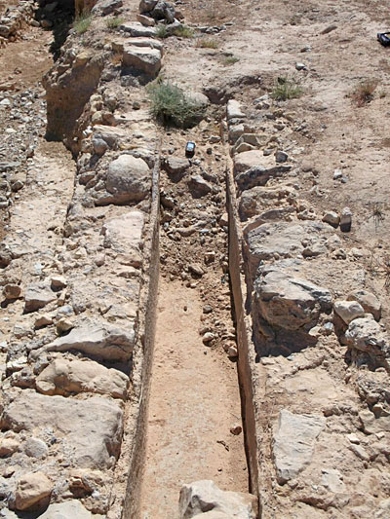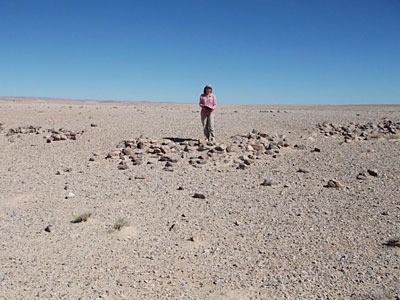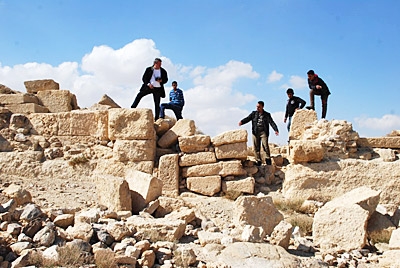
Ancient water management and field systems in southern Jordan
About 15 km to the south of the ancient city of Petra, archaeologists from the University of Leiden have discovered an impressive network of ancient water conservation measures and irrigated field systems.
Water management in the desert

“A huge green oasis” is how Dr. Ir. Mark Driessen describes it. “That’s what this part of the desert must have looked like in past times.” In Antiquity, an ingenious system of underground canals, hacked out of the limestone bedrock, in addition to specially built aqueducts and reservoirs with capacities of millions of liters of water, transformed this marginal region into a complex man-made landscape. This is a fantastic example of ancient water-management technology, constructed to irrigate the surrounding terraced field systems. “Thanks to the enthusiasm and hard work of the students and staff of the Faculty of Archaeology we have succeeded in linking the diverse elements of this complex which lie scattered over an immense area of many square kilometers, thereby closing the gaps in this fascinating archaeological puzzle’, explains Driessen, director of the Udhruh Archaeological Project.

It is possible that parts of this agricultural system – which was certainly exploited in the 6 th century – were already established around the beginning of our Era. Analysis of construction mortar and other artifacts such as pottery will hopefully provide us with answers.
A complete Roman fort?
The Udhruh Archaeological Project started in 2011 as a cooperative project between the Faculty of Archeology of the University of Leiden and the Petra College for Tourism and Archaeology of the Al-Hussein Bin Talal University. Surveys carried out in June and July in and around the Roman fort of Udhruh have resulted in many more interesting discoveries.
Exploration of the 4.7 hectare Roman fort of Udhruh shows that this is probably the most intact fort of the entire Roman Empire. In several places the outer walls and towers still stand several meters high and the interior buildings lie under a layer of construction debris more than 2.5 meters thick. The quarries that provided stone for fort construction have been extensively surveyed. They cover an area of several hectares and are amongst the largest to be identified in the Roman provinces.

Campaign 2013
The South Jordan survey will be continued in May and June 2013. Students will again be welcome to join local students in the field, surveying and mapping this archaeological paradise. Interested?
